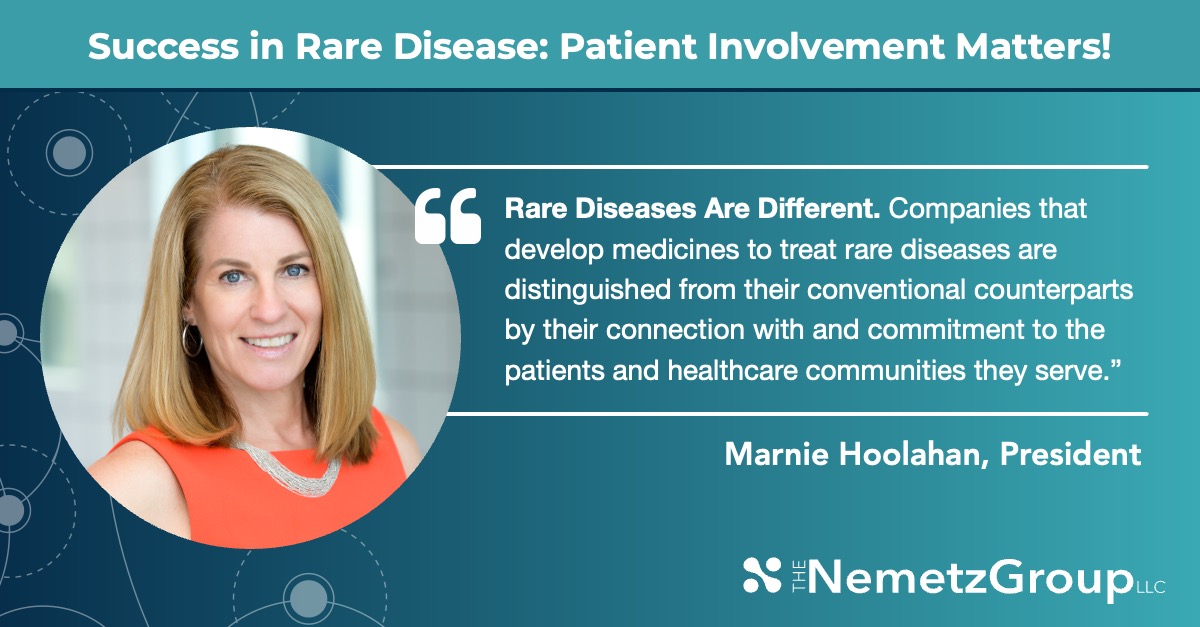This past December, the FDA finalized its guidance on rare diseases with the publication Rare Diseases: Considerations for the Development of Drugs and Biological Products. This FDA guidance has been in draft form since 2019.
The guidance recognizes that rare diseases are “highly diverse with varying prevalence, rates of progression, and degrees of heterogeneity that can affect both clinical manifestations and disease courses even within a condition. As such, no one program can be designed exactly like another.”
In other words, the FDA has formally acknowledged that the conventional rules don’t apply to orphan drug development. While there have long been incentives and tax advantages to the development of these drugs, the FDA is now offering regulatory advice, guidance, and a more flexible approach to scheduling and communication. The guidance provides a valuable and much-needed roadmap.
Further, the new guidance emphasizes the criticality of involving patients, caregivers, and advocates: “Patient input can provide important information about patients’ experiences, perspectives, needs, and priorities that can be incorporated throughout the drug development process.”
For those companies just starting their journey into rare disease or pivoting in this direction for the first time, the need to involve and leverage these populations represents a different approach whose importance cannot be overstated.
It Starts and Ends with the Patient
In our collaboration with many companies developing therapeutics for rare diseases, we gain insight into the unwavering dedication of these teams towards patients seeking someone to understand their distinctive journeys. We consider ourselves fortunate to be exposed to numerous patient stories.
The infectious passion these teams exhibit in supporting patients resonates with us, providing a collective sense of purpose. One such example is of a founder of one of our client companies, who, from day one, was committed to ensuring that patients were central to their vision and that every employee involved in the drug development process understood and was exposed to the patient’s journey.
Patient engagement began with the IND filing. Patients were aligned with the company’s mission and vowed to support the company through clinical trials. More than a dozen global patients worked collaboratively with our client to define a multi-symptomatic scorecard that was supported by the FDA and deployed in the pivotal study. Those same patients attended the FDA advisory board meeting to express the importance of approving the treatment. They helped to clinically define and measure what living with their diagnosis meant and how to assess its impact.
Patients were involved in all aspects of clinical development and commercialization and were considered part of the company fabric.
Rare Diseases Are Different
Companies that develop medicines to treat rare diseases are distinguished from their conventional counterparts by their connection with and commitment to the patients and healthcare communities they serve. In part, this reflects the rarity of patients and the experts who treat them — each is valuable and deserves dedicated attention.
“Patient-Centricity” is not just company-speak, or a patient’s picture, or a quote hanging in the hallway. It is the purpose and mission of the company itself, ingrained into company values and reflected in the relationships that exist from the CEO to the administrative staff. This passion and patient-first foundation is exhibited in every aspect of drug development and commercialization, including the allocation of time and resources.
It’s not just a moral imperative. It is a strategic necessity for successful outcomes in challenging indications.
For example, in May 2023, Rohita Sharma, PhD, Global Senior Director of Medical Affairs at Alexion (now a subsidiary of AstraZeneca), and her colleagues shared this publication detailing how engaging with patients as partners, they have been able to understand the patient experience better, leading to healthcare solutions that are more empathetic and targeted.
As they emphasized, a successful effort needs to be top-down-endorsed and company-wide-embraced. The authors conclude with exactly the right sentiment: “You are not a patient-centric organization until the patients tell you that you are!”
Making It Happen
Developing a cultural mindset of patient-centricity can start with cross-functional, grass-roots efforts, with compliance as a critical partner. The FDA is strongly advocating for the voice of the patient; here are some simple steps to shift in that direction:
-
- Stories. Bring patients into the company to share their stories and provide emotional context to their disease.
-
- Pictures. Use patient pictures at the start and throughout presentations. Explain and emphasize how what you do has an impact on the patient.
-
- Language. Ensure all communications use patient-sensitive language. For example, rather than saying, “Patients failed a clinical trial,” say, “Patients did not receive benefit during a clinical trial.” (Patients do not fail therapies; therapies fail patients.)
-
- Focus. When developing new programs or initiatives, always ask, “How will this help the individual patient?”
The FDA’s finalized guidance on rare diseases is a welcome and important step in expanding the reach, speed, and success of orphan drug development. Companies involved in these efforts must embrace patient-centricity as a mission, integrating it into their values and relationships across all organizational levels.
Successful efforts, exemplified by companies like Alexion, require a top-down endorsement, company-wide embrace, and a cultural foundation that prioritizes patients in every aspect of drug development and commercialization.
(You can find additional perspectives on building patient-centric strategies in these previous newsletters: Rare Diseases: Abandon Everything You Think You Know and Rare Diseases — It’s All About the Patient, as well as this 2023 webinar with Genzyme alums.)
